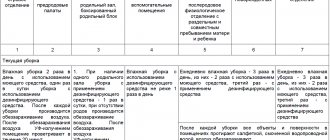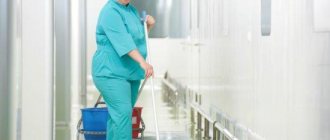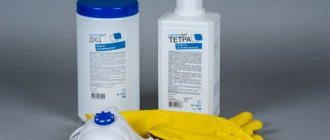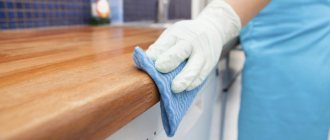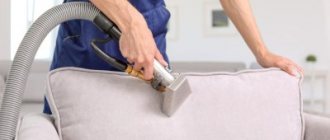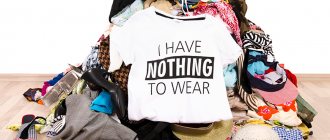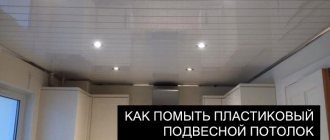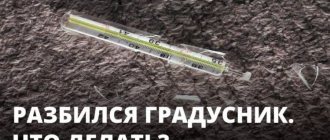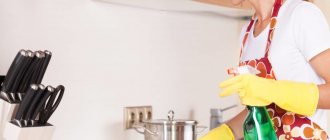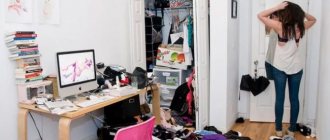Cleanliness is one of the most important conditions for health. After all, bacteria cause most diseases. It is very important to keep not only your body, hands, but also the room clean. Cleanliness in a medical facility must be ideal, since this is where not only sick people come, but also healthy ones. Hospitals should not be a breeding ground for infections, but, on the contrary, help preserve the health of citizens. Therefore, cleaning in such establishments is carried out according to special rules and has special approved instructions. Let's consider the rules for general cleaning in medical institutions.
What types of cleaning are there?
Medical facilities must always be clean. It is this condition that will prevent the spread of nosocomial infections. For this purpose, only general cleaning in medical institutions is not enough. We will consider below the types of order that still need to be carried out:
- Pre-cleaning.
- Current.
- Final.
- General.
Let's consider what goals each of them pursues:
- Pre-cleaning is done at the beginning of the day. Removing dust. A nurse in special clothing and gloves uses a rag with a disinfectant solution to remove dust from surfaces. A nurse is washing the floors. Finally, turn on the bactericidal lamp for 1 hour.
- Routine cleaning is carried out during the working day, removing dirt. Disinfect equipment and dressings. Wipe surfaces with a disinfectant solution. They wash the floor and turn on the germicidal lamp.
- Final cleaning is carried out at the end of the working day. It is necessary to ensure that the premises are always ready for work. In addition to disinfecting surfaces, they wipe down the walls and wash the floor. Finally, quartzization is carried out.
- General cleaning is carried out according to the established schedule. The goal is to reduce the risk of infection and keep the number of germs to a minimum.
We will talk further about how general cleaning is carried out in medical institutions.
Alaminol Plus
It is an antiseptic that has a powerful effect against tuberculosis pathogens, viruses, and harmful microorganisms. The shelf life of the product is 3 years, and the working solution can be stored for 14 days.
Alaminol Plus is intended for use in medical institutions, educational institutions and utility companies. It can be applied either with a napkin or with a spray on surfaces, cleaning equipment, laboratory glassware, shoes, and medical instruments. The solution concentration rate is 0.5% for purification from pathogens of viral infections.
General cleaning schedule
Each medical facility has its own cleaning schedule.
General cleaning in medical institutions is carried out depending on the type of purpose of the room:
- Wards and functional rooms - at least once every 7 days.
- Premises where aseptic conditions are maintained for procedures - once every 7 days.
- Therapy rooms - once a month.
- Operating units, maternity rooms, sterilization, manipulation, treatment rooms - once a week.
- Diagnostic laboratories that work with native blood and serum - once a month.
- Surgical dentist's office - once every 7 days.
- In blocks with newborns and premature babies - every 10-12 days. In this case, the children are transferred to another disinfected room.
The schedule for general cleaning in a medical facility is drawn up by the head nurse. Approved by the head of the department. A responsible person is appointed, who makes an appropriate note in the log after cleaning.
How are premises cleaned in an educational institution?
In educational institutions, special attention is paid to cleaning toilets.
Organizing cleaning is also important in educational institutions. Disinfection reduces the risk of spreading infections and quarantine. There are also two types of cleaning: general and routine.
Cleaning and disinfection in schools and other educational institutions is carried out daily. The procedure and frequency are established by the epidemiological station. Disinfection can be preventive, current and final. Its implementation should be carried out by specially trained people. Sanitary services must supervise cleaning. All cleaning equipment must be in good working order and meet the requirements.
Wet cleaning of toilets and the canteen is carried out at the end of each shift. Teaching and support areas are cleaned after classes. The technological equipment of the catering department is processed daily. Toilets and benches are disinfected on a daily schedule. They also pay attention to the disinfection of sanitary equipment. General cleaning is done once a month. The ventilation grilles are cleaned at the same frequency. If, after the presentation to the inspection services, it is determined that the level of cleanliness is inadequate, the regime becomes more complicated.
Cleaning in an educational setting helps limit the spread of infection. All rooms are cleaned daily. Particular attention is paid to the food block, toilets, and medical room, if available.
Main stages of cleaning
General cleaning in medical institutions consists of two stages:
- Sanitary and hygienic.
- Disinfection.
The first stage includes washing surfaces and deep cleaning them. Damage repair, restoration of protective coatings.
The procedure for carrying out general cleaning in medical institutions at the second stage is as follows:
- Disinfection of surfaces.
- Disinfection of equipment.
- Air disinfection.
Disinfectants for medical institutions. Main groups.
Halogen-containing
These are products based on the use of iodine, bromine, and chlorine. They effectively destroy microorganisms, but irritate the mucous membranes and affect the respiratory system. Treatment with Chloramine, Chloreffect, Bleach, and Chlorhexidine is common in medical organizations (hospitals, clinics).
Preparations based on oxygen
These are low-toxic substances that are safe for humans and the environment and effectively destroy pathogens and microorganisms. The main disadvantage is increased corrosive activity, which is why they cannot be used for processing tools made of metal.
Disinfectants based on aldehydes
They have an active antimicrobial effect and effectively destroy bacteria. They are a common chemical method for pre-sterilization treatment of medical equipment. Due to excessive irritant effects on the respiratory system, they are restricted for use in the presence of people.
Alcohol preparations
They have a bactericidal effect on most microorganisms, but are weak against spores. Together with aldehydes, they are part of aerosols and are used to clean stethoscopes and scissors.
Cationic substances
They do not have a corrosive effect on metals, are odorless, but are effective against a certain number of pathogens. Most often used at the stage of primary disinfection.
Guanidine-containing substances
They have a long duration of action, since after their use a bactericidal film appears on the surface. Due to their quality, they are considered the most promising drugs.
Disinfectants based on phenols
They are effective in disinfecting the action of microbes, but are not useful in the fight against viruses and bacterial spores.
Who is allowed to clean?
Cleaning should be carried out by medical personnel:
- Nurses.
- Specially trained nurses.
To carry out general cleaning in a medical facility, the requirements for cleaners are as follows:
- At least 18 years of age.
- It is necessary to undergo special training on working with disinfectant solutions.
- Know the instructions for your functional responsibilities.
- Pass a medical examination.
- People with hypersensitivity to chemical solutions are not allowed to clean.
- Personnel must know how to provide assistance in case of poisoning with a disinfectant solution.
There are instructions for general cleaning in a medical facility. It must be examined by the medical personnel who will perform the cleaning.
Laundry
The collection, sorting and transportation of dirty linen is carried out by technical employees; people who treat and care for patients - doctors, nurses - are not allowed to participate in this process. Employees who change linen must be provided with special clothing, which, together with sheets and duvet covers, is sent for washing. The mask and gloves are treated with disinfectants and antiseptics. They collect dirty linen in the wards in thick bags. After changing the sheets and pillowcases, the room is cleaned. Linen with traces of blood and biological secretions is disinfected immediately in the pantry, the rest of the items are sorted and packaged. According to SanPiN of medical institutions, in 2022, packages are transported on a cart to the hospital laundry. Where is washing done in washing machines?
What is included in the equipment
For cleaning you need:
- Protective clothing. Gloves, respirator, cap, goggles, rubber shoes.
- Containers for disinfectant solutions and clean water. They must be marked accordingly.
- Clean rags, mops for the floor, walls and ceiling. Battery brushes.
- Disinfecting solutions.
- Detergents.
In order to start cleaning, you need to prepare your equipment.
Inventory requirements
All items intended for cleaning must be labeled. This includes:
- Rags.
- Napkins 8 pieces.
- Washcloths.
They are sterilized before cleaning. Store in a specially designated place. Use only for those premises for which they are intended.
Also subject to marking:
- Container for disinfectant solutions.
- Basins.
- Buckets.
- Container for cleaning solutions.
- Mops - 2 pieces.
- Container with a lid for soaking used rags.
It is necessary to carry out preparatory work before starting general cleaning in medical institutions. The instructions contain instructions on how to proceed.
Floor care with cost calculations
In this article, we have described effective methods and products for caring for various types of floors. An accurate algorithm will ensure longer operation. Just like properly selected solutions and gels will maintain the good appearance of the coating. Therefore, it is important to know which products will not harm and how to use them economically.
- 3.1 Table of disinfectant costs
Laminate floors
Laminate ─ is a wooden board covered with a decorative layer. The material is a high-quality parquet imitation. It is wear-resistant and does not require the use of wax or polishing agents.
The only requirement is to avoid water getting into the joints between the slabs. Otherwise, swelling of the laminate may form. Therefore, during cleaning, wipe the surface with a damp cloth, then dry it to prevent moisture from penetrating into the wood.
To remove dirt, difficult stains, and grease from laminate flooring, do not use abrasive cleaning powders, soap solutions with a high alkali content, acids, or bleaches.
There are several popular manufacturers of special products in the form of sprays, gels with a neutral pH level, these are: Kraft Zwerg, HG, Centralin Laminat Pfelge, Sano Poliwix.
If scratches appear on the coating after construction work, use a repair paste. Almost any one is suitable here, depending on the funds you plan to spend.
The methods listed are also good for cork flooring.
Cleaning tiles
The opinion that tiles do not require attention is wrong. Look carefully at your tiles: the most common problems are the appearance of mold, mildew, and limescale.
At home (bathroom, kitchen), universal detergents and cleaning products are used for cleaning, always without granules and hard inclusions. Stains are removed with a soft brush or flannel cloth.
A more thorough approach in kindergartens, schools, canteens, catering facilities, restaurants, food production, sports clubs, swimming pools. The cleaning algorithm includes not only dirt removal, but also disinfection. Therefore, the washing liquid contains agents with antimicrobial and antifungal effects.
The products used in swimming pools, gardens and catering establishments are the most reliable for cleaning. The table below lists 3 common cleaning fluids and instructions for use:
| № | Name | Cooking method | Approximate consumption |
| 1 | "Aminaz-Plus" ─ colorless or yellow foaming liquid | The prepared solution is stored for 1 month in a sealed container. For daily cleaning, use 2% liquid ─ 200 ml of product per 9800 ml of water. | A 5 liter bottle is designed for 25 cleanings. |
| 2 | "Instrudez" ─ light yellow liquid with a citrus scent | The prepared solution is active for 30 days. Recommended concentrations 1-1.5% ─ 100-150 ml per 9900-9850 ml of water. | The 5 liter capacity is designed for 35-50 cleanings. |
| 3 | "Maximus" ─ transparent blue liquid | The working solution is suitable for 35 days. To wash tiles, use a 2-3% solution ─ (200-300 ml per 9800-9700 ml of water). | A 10 liter canister is designed for 30-50 uses. |
"Aminaz-Plus" Read more
"Instrudez" Read more
"Maximus" Read more
How to clean floors in hospitals
Washing floors in a hospital is a very important procedure when cleaning rooms and wards. This is one of the basic sanitary and hygienic requirements. It is aimed at preventing nosocomial infections.
In the premises of health care facilities (medical and preventive institutions), routine wet cleaning is carried out daily - in the morning and in the evening. Under certain circumstances, surgical or infectious diseases departments are cleaned more frequently. The sequence is important here: from the walls towards the center of the room, and then to the doors.
The frequency of general cleaning depends on the profile of the hospital department. In this case, the washing procedure differs from traditional wet cleaning.
Cleaning in hospitals is carried out in 3 stages: First, the surface is moistened with a disinfectant solution for 1 hour. Then wash everything off with soapy water. And at the end they are washed with clean water.
In therapy, general cleaning is carried out once a month according to a predetermined schedule. In the surgery, delivery room, neonatal department, infectious disease wards, and bacteriological laboratories, surfaces are thoroughly disinfected weekly.
Previously, self-prepared disinfectant and soap solutions based on chlorine, hydrogen peroxide, and laundry soap were used. With the development of the pharmaceutical industry, ready-made products with a low degree of toxicity appeared on the market. They have antimicrobial properties and have a gentle effect on the surface being treated and do not reduce the wear resistance of the flooring.
We have placed the consumption of detergents and disinfectants used in hospitals in the table:
| № | Name | Cooking method | Approximate consumption |
| 1 | "Sonata" ─ colorless or yellowish liquid | The shelf life of the working solution is 2 weeks. For 10 liters take 25 ml of product and 9975 ml of water (0.25%). For general cleaning, 200-300 ml “Sonata” + 9700-9800 ml of water. | 10 l bottle: ─ for current cleaning 400 times (0.25 ml each); ─ for general use ─ 30-50 times (200-300 ml each). |
| 2 | "Rus-chlor" ─ tablets containing chlorine | The working solution can be stored for 5 days. For daily washing use 2-3 tablets. for 10 liters of water. For routine disinfection of floors ─20 tablets. for 10 l. | Bottle consumption (1000 pcs.): ─ 4-6 tablets. ─ for 200 days for wet processing; ─ 20 tablets each. ─for 50 general cleanings. |
| 3 | Kiilto Kloriitti Forte ─ transparent liquid with a yellowish tint | The prepared solution is suitable for 7 days. For routine cleaning, prepare a 0.1% solution (80 ml of liquid and 9920 ml of water), for general cleaning - a 3% solution (2.5 l of concentrate and 7.5 l of water). | Bottle consumption (5 l): ─ 80 ml ─ for 60 times of washing floors; ─ 2.5 l ─ for 2 general cleanings. |
Products for parquet floors
Parquet is a material made from valuable tree species. To preserve its integrity, its original appearance, and its ability to create a natural microclimate in the room, it is necessary to properly care for it.
During operation, it is important to preserve the coating of the boards, which is an oil and wax mixture. Dust is removed with a vacuum cleaner, the surface is wiped with a damp, well-wrung cotton cloth.
It is strictly forbidden to use abrasive detergents and chemicals with an aggressive chemical composition (active chlorine) to wash parquet material. This will lead to the destruction of the protective layer of solid boards and the appearance of the following problems:
- increased accumulation of moisture, swelling of wood;
- the appearance of cracks, irregularities, deformations;
- change in color, appearance of spots;
- drying out, noise and creaking while walking.
Care products for parquet floors are selected taking into account the coating and its location (living room, terrace, conference room, restaurant). Cleaning emulsions and concentrates do not damage the surface layer of wax and oil, retain a glossy or matte appearance, and remove gray and green plaque from wood.
Popular manufacturers of quality parquet products: OSMO, Bona Soap, Lobahome, Lobacare, Adesiv. Recommended domestic detergents ─ Doctor Moikin.
How to keep carpet clean
For carpet, dry and wet cleaning is provided. It is not recommended to use water in the following cases:
- if the material is covered with dirt-resistant impregnation, moisture destroys it;
- if the carpet is on an adhesive or latex (foam) basis;
- if the surface of the coating is printed with paints.
Dry cleaning is carried out every 3-4 days, in preschool institutions every day. To do this, use a vacuum cleaner or a special machine with rotating brushes. Once a month, deep cleaning is done using bulk products that have sorption properties. The powder is scattered over the coating and left for 1.5-2 hours. During this time, cleaning particles bind dust, dirt, and hair. An indicator of purification is a change in the color of the granules. Afterwards everything is removed with a vacuum cleaner.
Carpet washing is carried out no more than once a month, provided that the covering is made of synthetic fibers. It is carried out manually, with a vacuum cleaner or by machine. Detergent, concentrate, washing powder, reagent, shampoo are diluted in water until foam forms. It is applied to the surface of the coating, rubbed with a stiff brush and left for 15 minutes. After the foam has been absorbed into the pile, the procedure is repeated. Remaining water is removed with a spatula. When properly cleaned, the carpet dries out in 5-6 hours.
Preparatory activities
In order to begin general cleaning, you need to prepare the room. Namely:
- Clear cabinets of medications.
- Clear shelves and tables for processing.
- Remove food items.
- Defrost the refrigerator.
- Move furniture away from the walls.
- Take out the trash.
- Dispose of disposable medical device waste.
- Remove equipment and tools from the office.
- Turn off electrical appliances.
After the room has been prepared for cleaning, disinfectant and cleaning solutions are prepared.
Nuances
The requirements of SanPiN, even in an abbreviated version, are so extensive, and medical staff from every level at any position must comply with every point so that administrative liability does not arise. All employees are trained and instructed on how to act in various unforeseen situations. If biological materials are splashed during medical procedures, the immediate supervisor is notified and the necessary disinfection measures are taken. The offices of medical workers must be equipped with first aid kits, dressings, a solution of protargol, potassium permanganate, and iodine.
What solutions are used
To carry out routine and general cleaning in medical institutions, it is necessary to have a three-month supply of detergents and disinfectants.
For general cleaning, prepare the following solutions:
- Soap-soda 0.5% solution. For 10 liters of water add 25 grams of soap shavings and 25 grams of soda ash.
- Chloramine solution. For 10 liters of water, 500 grams of “Chloramine”.
- Hydrogen peroxide solution. Take a 6% solution into a bucket of water and add 0.5% detergent.
- Mold fungi are treated with a 0.2% Lizorin solution. For 10 liters of water - 20 ml of Lizorin.
New generation drugs are used in tablets for preparing solutions:
- For a 0.1% Deochlor solution you need 7 tablets per bucket of water.
- For a 0.1% Solikor solution – 7 tablets.
There are also drugs such as Septodor, Lysoform, Inceptusin and others. They have a wide spectrum of action and are economical to use.
Gloves must be used when preparing solutions.
Alaminol
Available in the form of a bright blue concentrate with virtually no odor. There are no contraindications for use. According to the instructions, the disinfectant is used to treat instruments, medical equipment, napkins, and dressing materials. Also, Alaminol solution can be successfully used during cleaning in medical and public institutions, as well as in public utilities during seasonal exacerbation of diseases.
There are different strengths of Alaminol concentrates: from 1 to 10%. The “strongest” solution is used to disinfect medical items.
First stage of cleaning
Let's look at the initial action algorithm for general cleaning in a medical facility:
- Prepare the room and surfaces for processing, freeing them from debris and unnecessary objects.
- Prepare equipment labeled for the appropriate room.
- Wear special clothing: cap, mask, gloves, apron, special shoes.
- Prepare a cleaning solution.
- Prepare a disinfectant solution.
Then you can proceed to the main steps.
Maxi-Steril
This is a very economical drug that has an immediate effect on the surface being treated. Due to its characteristics, it is characterized by low toxicity and environmental safety.
Maxi-Steril effectively destroys germs and bacteria that spread tuberculosis and dangerous infections. The product is used in the process of disinfection of medical instruments, endoscopes, and equipment.
Second stage of cleaning
Use a solution of soap and soda and wash:
- Ceiling and walls. For the ceiling, use a mop with a long handle. A container marked for walls is filled with solution. They start from the ceiling. They also wash lampshades and light bulbs. Processing is carried out in one direction. The walls are washed from the door from left to right and from top to bottom.
- Batteries. Water pipes. A special brush is used for batteries.
- Window sills. Frames and glass.
- Surfaces of cabinets, tables, shelves. Use rags marked for furniture. First wash the inner surface, then the outer surface. Top down.
- Handles of doors, faucets.
- Sink. Use a cleaning agent.
- Fridge. Wash with a separate cloth.
Then you need to rinse off the cleaning solution with clean water.
Third stage of cleaning
We will continue general cleaning in the medical facility. The algorithm of actions is as follows:
1. Start disinfecting the premises. Using the prepared solution and a clean rag, treat all surfaces in the appropriate order:
- Ceiling wall.
- Glass window frames.
- Window sills.
- Heating radiators.
- Furniture.
- Sink.
- Floors.
2. After wiping the floor with a disinfectant solution, move the furniture to the treated areas. Used rags for processing are thrown into a waste container.
3. Finally, waste collection containers are treated with disinfectant solutions.
4. Next:
- Take off gloves, special protective clothing, a mask, and place them in a special bag for dirty laundry.
- The signets are disposed of.
- Hands must be washed and treated with antiseptic.
- Close the room for the necessary time for disinfection.
After the required time has passed, they move on to the next stage.
Maxi-Sept
An effective aerosol skin antiseptic used in disinfection and treatment of the hands of medical staff, donors, surgeons, and patients. The product can be used in everyday life, treating hard-to-reach surfaces and small objects. The product is easy to use and quickly removes dirt.
Proper chemical disinfection will effectively eliminate harmful microorganisms from the surfaces of objects and skin. This is a guarantee of human health and an obstacle to the spread of infection.
The fourth and fifth stages of cleaning
After the disinfection time has passed, you must:
- Wear clean clothes, mask, cap, gloves.
- Wash your hands, sanitize your shoes.
- Rinse the containers that contained the disinfectant solution with clean water.
- Pour tap water and wash all surfaces that were treated in the same sequence as the solution was applied.
- Wipe windows and surfaces dry with a clean, dry rag, if required by the instructions for using the disinfectant solution.
- In sterile blocks, sterile rags are used for processing.
- Finally, wash the floors with tap water. Use clean rags. The bucket must be labeled.
- Take off clothes, mask, cap, gloves.
- Give clothes to be washed.
- Dispose of gloves, cap and mask.
- To wash hands.
Then proceed to the final stage:
- Turn on the bactericidal lamp.
- The log records the time of quartzing the room and carrying out general cleaning.
After the required time has passed, the room is ventilated for 15-20 minutes, depending on the weather.
For the final stage of general cleaning in a medical facility, the procedure is as follows:
1. After cleaning is completed, it is necessary to disinfect the equipment that was used. Carry out disinfection:
- Rags.
- Floor cloth.
- Inventory.
2. After disinfection, rinse everything in clean water and dry. The rags are sent for washing.
3. Before the onset of the cold season, cleaning includes washing windows on both sides and tightly closing the frames.
Handling and storage of cleaning equipment
Maintenance of cleaning equipment is an integral part of the cleaning process and includes washing and disinfection, as well as proper storage of clean equipment. Poorly treated rags, cleaning containers and mops accumulate microorganisms and themselves become factors in the transmission of infection.
Sanitary rules SanPiN 2.1.3.2630-10 (clause 11.5 of section 1) provide for the possibility of processing mops and rags in washing machines specially designated for these purposes, which are installed in places where cleaning carts are assembled.
A separate room must be allocated for storing cleaning equipment (clause 11.5 of section 1 of SanPiN 2.1.3.2630-10), equipped with racks or other devices for fixed storage of mops, containers and rags.
Thus, the cleaning process is one of the key links in the prevention of nosocomial infection. Despite the ordinary nature of the cleaning process, medical organizations face significant difficulties in organizing it. Solving these problems is possible with an integrated approach and the development of step-by-step algorithms and visual instructions for personnel performing cleaning and maintaining cleaning equipment in each specific medical organization.
First aid for poisoning
Medical personnel working with disinfectants must know the first signs of poisoning in order to provide the necessary assistance:
- Respiratory irritation.
- Sneezing.
- Sore throat.
- Tearing.
- Irritation of skin and mucous membranes.
What to do:
- If the solution gets on your skin, keep the area under running water for 10 minutes. Then lubricate with cream.
- If the solution gets on the eye mucosa, rinse immediately with clean water for 15 minutes and consult an ophthalmologist. There is a high risk of corneal burns.
- If the solution gets into the oral cavity, there is a risk of burns. Rinse your mouth with running water and take 10-15 Activated Carbon tablets. Drink plenty of water. There is no need to induce vomiting.
- If the respiratory system is irritated, remove the victim to fresh air. Rinse your mouth and nose with clean water. You need to drink warm milk.
- After providing emergency assistance, if necessary, the victim can consult a doctor.
Bianol
An effective disinfectant. Intended for sterilization of medical instruments, rubber, plastic, glass products, processing of plumbing equipment, and cleaning.
Bianol can also be used in veterinary institutions for the treatment of containers, halls, and vehicles transporting animals. The product has good bactericidal properties and effectively destroys viruses (HIV) and fungi.
A weak solution of the drug does not cause irritation to the skin. A 20% solution may cause redness of the dermis. The mucous membrane is irritated regardless of the concentration of the solution.

